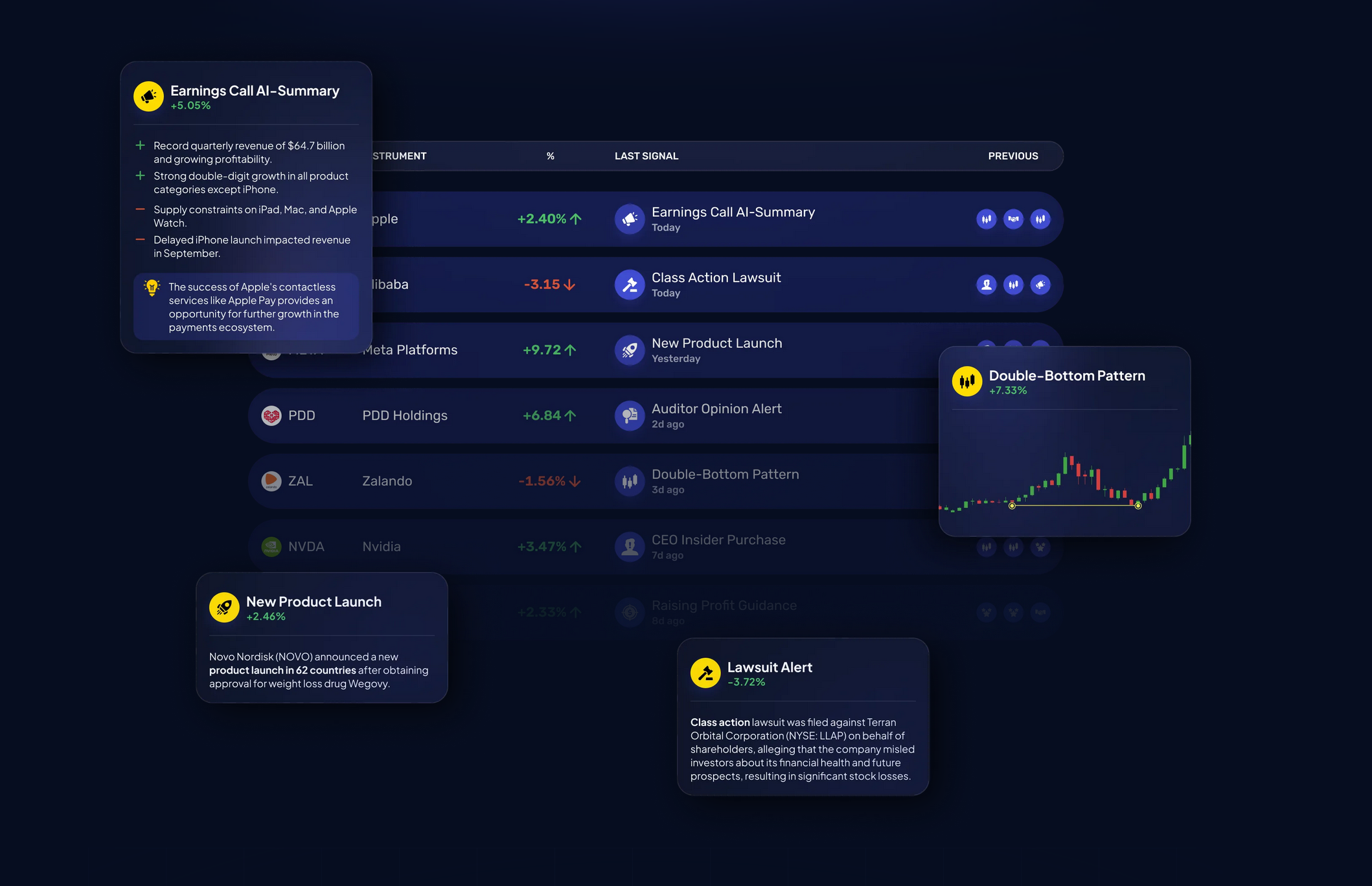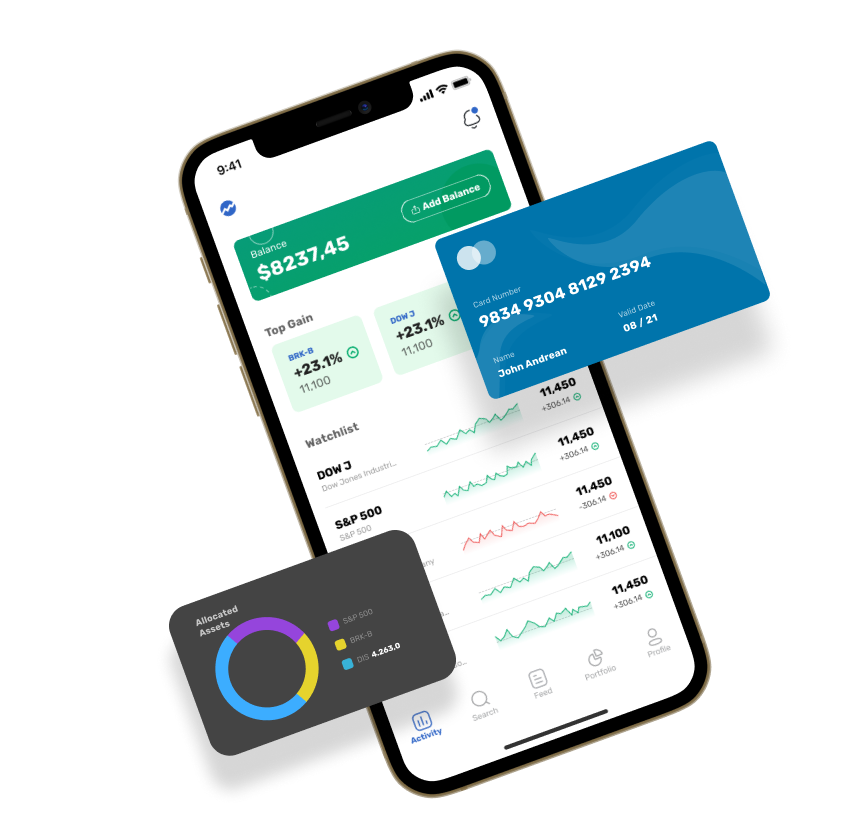20 Pro Ideas On Choosing AI Stock Predictions Analysis Sites
20 Pro Ideas On Choosing AI Stock Predictions Analysis Sites
Blog Article
Top 10 Tips To Evaluate The Data Quality And Sources Of Ai Stock Predicting/Analyzing Trading Platforms
In order for AI-driven trading platforms and stock prediction systems to deliver accurate and reliable information it is crucial that they assess the quality of the data they use. Poor data accuracy can lead flawed predictions, to financial losses or a lack of trust towards the platform. Here are the top 10 ways to assess sources and the quality of the data:
1. Verify data source
Check where the data comes from: Make sure you use reputable and well known data suppliers.
Transparency: The platform should openly disclose the data sources it uses and regularly update them.
Do not rely on one platform: trustworthy platforms frequently combine data from different sources to lessen bias.
2. Assess Data Freshness
Real-time vs. Delayed Data: Check if the platform is providing real-time data or delayed information. The availability of real-time data is essential for trading that is active. The delay data is enough for long-term analysis.
Check the update frequency (e.g. minute-by-minute updates or hourly updates, daily updates).
Historical data accuracy: Make sure that the information is accurate and consistent.
3. Evaluate Data Completeness
Check for missing data: Search for gaps in data from the past as well as tickers that are not working or insufficient financial statements.
Coverage: Ensure that the platform provides a broad range of stocks, markets as well as indices and equity markets that are pertinent to your trading strategies.
Corporate actions - Check if the platform account stocks is split. Dividends. mergers.
4. Accuracy of test results
Data consistency can be guaranteed by comparing the data of the platform with other trustworthy sources.
Find mistakes: Look for any anomalies, price errors or financial metrics that are not in sync.
Backtesting. Utilize the historical data to test your trading strategy and determine if it matches expectations.
5. Examine the Data Granularity
Level of Detail: Make sure that the platform can provide a full set of data, including prices for intraday, volume bidding-asking spreads as well as depth of the order book.
Financial metrics - See whether there are financial metrics in a comprehensive statement (income statements, balance sheets, cash flows) and key ratios (P/E/P/B/ROE and so on.). ).
6. Verify that the Data Cleaning is in place and Preprocessing
Normalization of data: Make sure the platform normalizes the data (e.g., adjusting for splits, dividends) to maintain consistency.
Handling outliers (handling anomalies) Check that the platform is handling anomalies and outliers.
Data imputation is missing Make sure to check if your platform is using reliable methods for filling in the missing data.
7. Assess Data Consistency
Timezone alignment: Align data according to the same timezone to avoid any discrepancies.
Format consistency: Ensure that the data is presented consistently (e.g. currency, units).
Cross-market compatibility: Verify that the information coming from exchanges and markets are synchronized.
8. Evaluate the Relevance of Data
Relevance to trading strategy: Ensure the data aligns with your trading style (e.g. technical analysis or fundamental analysis, quantitative modeling).
Features selection: Check that the platform offers relevant features to enhance forecasts (e.g. sentiment analysis macroeconomic indicator news information).
9. Examine Data Security and Integrity
Data encryption: Ensure that the platform has encryption in place to protect information during storage and transmission.
Tamper-proofing (proof against the possibility of tampering) Make sure that the data has not been altered or altered by the computer.
Make sure that the platform should be compliant with data protection regulations.
10. Transparency Model for AI Platform Tested
Explainability: The system must provide insights into the way AI models employ data to generate predictions.
Bias detection: Determine if the platform actively monitors and mitigates biases in the model or data.
Performance metrics. Examine the performance metrics like precision, accuracy, as well as recall to assess the reliability of the platform.
Bonus Tips
User feedback and reputation: Review user reviews and feedback to determine the platform's reliability.
Trial time: You may test the data quality and features of a platform using a demo or free trial before you decide to purchase.
Support for customers: Ensure that your platform has a robust assistance for issues related to data.
These tips will aid in assessing the sources of data as well as the quality of AI stock predictions platforms. You'll be able to make accurate and informed decisions about trading. Follow the most popular more on ai trading for more advice including ai investing platform, ai for investment, ai stock trading, best ai trading software, ai investment app, best ai trading app, ai stock picker, ai investing platform, ai for stock trading, ai trading and more.
Top 10 Tips For Evaluating The Regulatory Compliance Of Ai Stock-Predicting/Analyzing Trading Platforms
When evaluating AI trading platforms, regulatory compliance is a crucial aspect. Compliance assures that the system operates within the legal frameworks, safeguards personal data of its users and adheres to the financial laws, reducing the chance of legal issues or financial penalties. These are the top ten tips for assessing regulatory compliance.
1. Verify Licensing and Registration
Authorities regulating the platform: Make sure that the license and registration is with the appropriate financial regulatory authorities (e.g. SEC or FCA in the USA, ASIC or ASIC in Australia).
Verify the broker relationship: If your platform integrates with brokers or brokers, make sure they are also licensed and regulated.
Public Records: Go to the official website of your regulatory body for information on registration status as well as past violations and pertinent information.
2. Examine Data Privacy Compliance
GDPR - If your platform operates within the EU and/or provides services to users in the EU make sure that it complies with GDPR.
CCPA: California Consumer Privacy Act compliance is mandatory for users.
Policies on handling data: Read the privacy policies of the platform to determine the way it describes the collection, storage, and sharing.
3. Examine the Anti-Money Laundering(AML) measures
AML policies: Make sure that your platform is armed with a solid AML policy to identify and prevent any money laundering.
KYC procedures: Determine whether the platform is using Know Your Customer (KYC) which validates user identities.
Transaction monitoring: Find out if your platform is monitoring all transactions for suspicious activity and notifies the authorities.
4. Make sure you're in compliance with Trading Regulations
Market manipulation: Make sure that the platform has safeguards to prevent market manipulation, such as spoofing or wash trading.
Types of orders. Verify that the platform conforms to the regulations pertaining to order types (e.g. there isn't any illegal stop loss hunting).
The best execution: Ensure that the platform follows the best execution practices. This ensures that trades are completed at the best possible price.
5. Assess Cybersecurity Security Compliance
Data encryption. Make sure your platform has encryption for user data, both in transit and at rest.
Response to incidents. Verify whether the platform has a plan of action for handling data breaches and cyberattacks.
Certifications: Determine if the platform is certified in cybersecurity (e.g., ISO 27001, SOC 2).
6. Examine Transparency and Transparency
Fee disclosure: Ensure that the platform has clearly disclosed the fees, including additional charges or hidden charges.
Risk disclosure: Make sure the platform discloses the risks involved, particularly in the case of high-risk strategies or trading with leverage.
Performance reporting - Check to determine if there are clear and accurate performance reports that are provided by the platform for its AI models.
7. Verify that you are in compliance with International Regulations
Trading across borders When you conduct business internationally, ensure your platform is compliant with the laws in all jurisdictions that apply to it.
Tax reporting: See whether the platform provides tools or reports to help users to comply with tax regulations.
Sanctions compliance - Ensure that the platform complies to international sanctions and doesn't allow trading only with the countries or entities that are banned.
8. Reviewing Audit trail trails and Record-Keeping
Transaction records: Verify that the platform keeps precise records for purposes of regulatory and for audit.
User activity logs: Verify if the platform logs users' activities, including transactions, logins, and changes to account settings.
Audit readiness: Ensure that the platform can provide all necessary documents and logs in the event of the need for a regulatory audit arises.
9. Evaluation of Compliance AI Specific Regulations
Algorithmic rules of trading: If the platform permits algorithmic trading, it must be in compliance with European regulations, such as MiFID II and U.S. Reg SCI.
Fairness and Bias: Check to determine if there are any biases that the platform is able to detect and reduce in its AI model. This will ensure fair and ethical trade.
Explainability: As stipulated by certain regulations, the AI platform should provide clear explanations of AI-driven predictions and decisions.
10. Review User Commentaries and Regulatory Historical Historiography
User reviews: Conduct research to assess the platform's reputation regarding legal conformity.
Review the regulatory history to see if any regulatory violations have been committed, as well as fines and penalties.
Third-party Audits: Make sure that the platform undergoes third-party inspections to make sure it is conforming to all laws and regulations.
Bonus Tips
Consultations with a lawyer: You might need to speak with an attorney to establish if the platform is in compliance with the applicable laws.
Trial period: Take advantage of an unpaid trial or demo to assess the platform's compliance features and documentation.
Customer support: Check that the platform can provide support to customers with issues or concerns relating to compliance.
If you follow these guidelines that you will be able to assess the regulatory compliance of AI platforms for analyzing and predicting stocks and ensure that you select an option that is within legal frameworks and protects your interests. Compliance does more than reduce legal risks, but can also increase confidence with the platform. Have a look at the recommended more help for ai trading tool for website info including ai stock prediction, chart ai trading, ai stock analysis, best ai for stock trading, stocks ai, invest ai, ai stock price prediction, chart analysis ai, ai copyright signals, ai stock predictions and more.